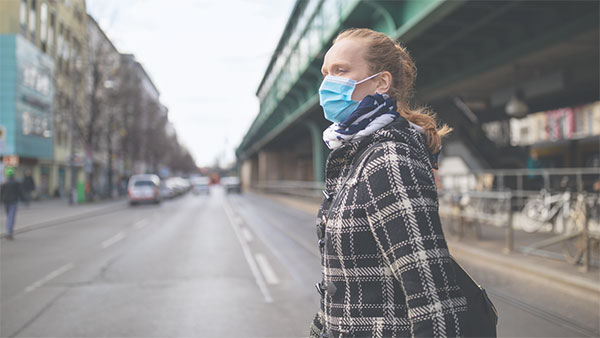Lancet Published online 28 August, 2021 | https://www.thelancet.com/journals/lancet/article/PIIS0140-6736(21)01755-4/fulltext
Digest author(s): Stylianos Loukides, e-Learning Director / 29 August, 2021
Long-COVID related consequences are still under consideration with multiple systems to be involved. Α recently published study in the prestigious international scientific journal Lancet, aimed to determine the clinical impact at 6 and 12 months after the initial onset of symptoms in people hospitalised due to COVID-19.
Specifically, data from COVID-19 patients discharged from a hospital in China province between 7 January and 29 May, 2020, were analysed. Follow-up visits were carried out at 6- and 12-months post discharge during which the survivors replied to questionnaires about the presence of symptoms and their quality of life. These questionnaires were also completed by a group of normal individuals of the same age who had not been infected with COVID-19. Also, clinical examinations and laboratory tests were performed for the patients, which included imaging and pulmonary function tests.
In total, 1,276 COVID-19 survivors completed both visits. This is the largest relevant study so far in the international literature. The average age of the patients was 59 years and 681 (53%) of them were men.
49% have at least one symptom 12 months after the disease onset. The percentage of patients with at least one symptom was 68% at 6 months and 49% at 12 months. More patients had specific anxiety or depression at 12 months (26%) compared to 6 months (23%). The most common symptoms at 12 months were fatigue and muscle weakness. About 1/3 of the patients continued to report some degree of shortness of breath. Overall, patients reported more mobility problems, physical aches, anxiety or depression and provided lower quality of life self-assessment scores than the same age control group. Compared to men, women were more likely to feel fatigue, muscle weakness, anxiety or depression at 12 months. 88% of patients working before COVID-19 had returned to their original job 1 year after the illness. Of 186 patients with abnormal lung CT at 6-month visit, 128 attended the 12-month visit but ten refused to do the test. The lung imaging abnormality gradually recovered during 1-year follow-up. Spirometric and lung volume parameters of most patients were within normal limits at 12-month visit. Lung diffusion impairment, defined as diffusion capacity for carbon monoxide less than 80% of predicted, was decreased in 23% of patients not requiring oxygen during hospitalization, in 31% of those requiring oxygen treatment and in 54% of patients treated with HFNO, NIV or IMV.
The findings of this study suggest that full recovery for many patients after COVID-19 may take more than 1 year. They should definitely be considered by the state in planning the provision of long-term health care services, but also by citizens who need to understand the severity of COVID-19, immediately and in the long term.





